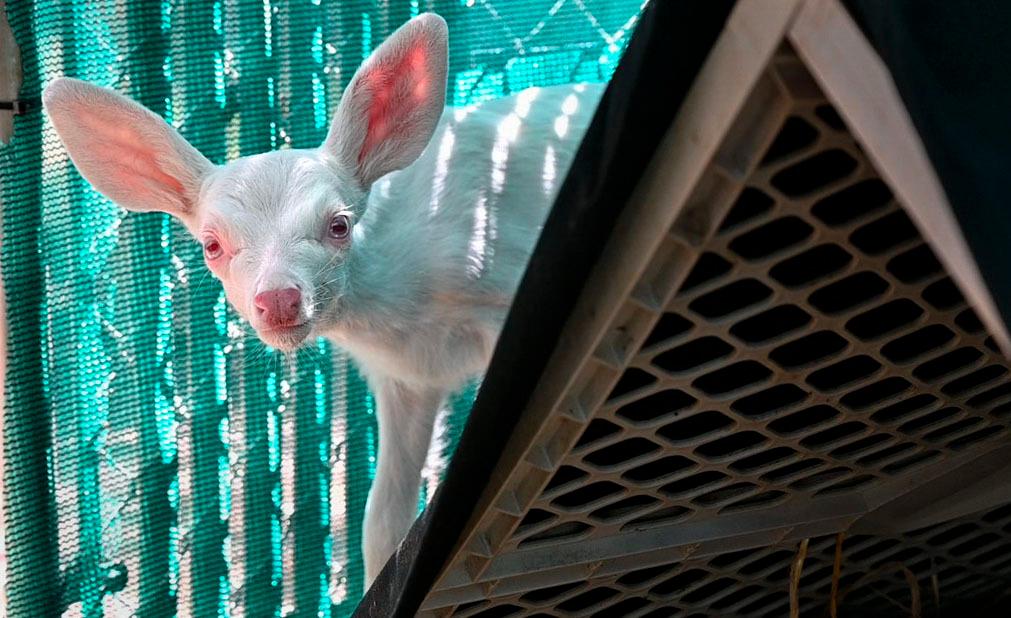LOOMIS, Calif.—A rare all-white fawn has been found and rescued in Northern California by a truck driver who delivered the animal to a rescue center.
The Sacramento Bee reported Sunday that the small albino deer with a pink nose and large pinkish ears was discovered sitting in the middle of a road in Woodland, near Sacramento.






